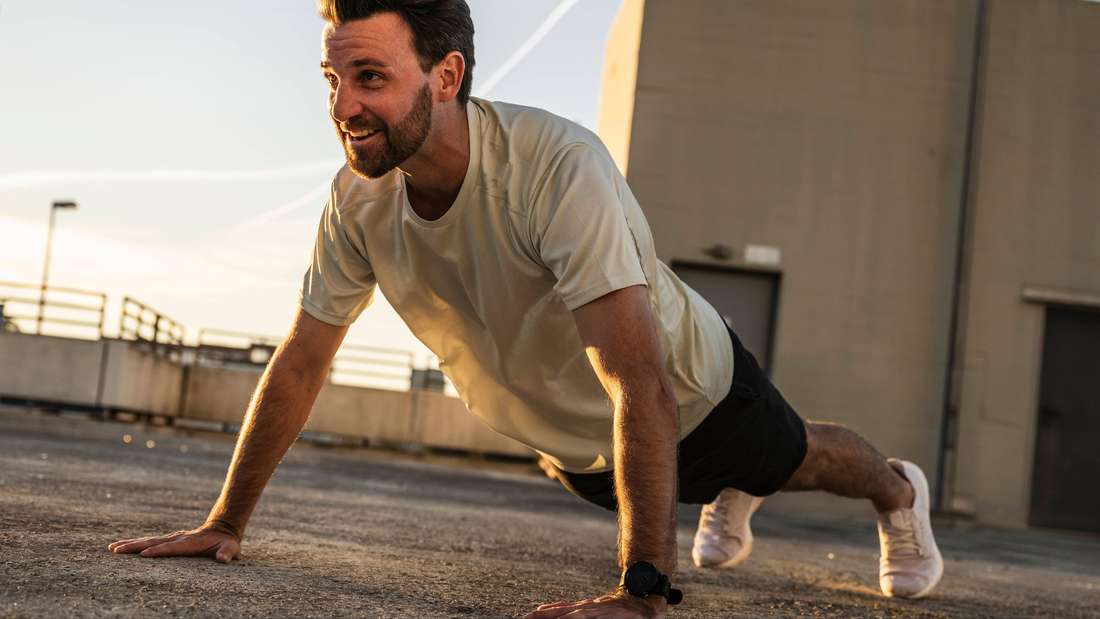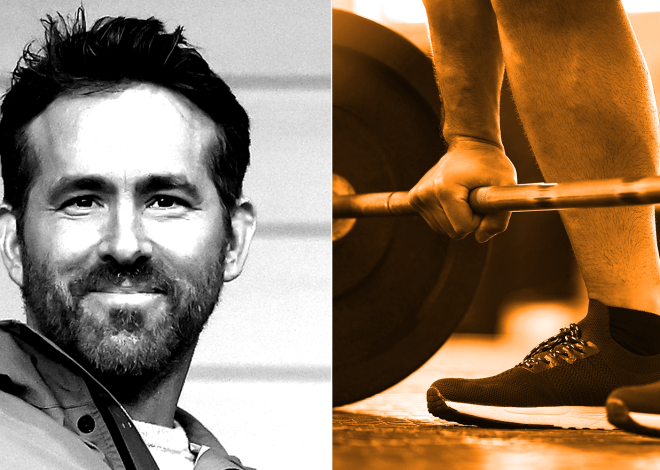
How many push-ups men and women should do
Press
Everyone has probably done push-ups at some point – more or less. But how many push-ups should you actually be able to do to be considered fit? An expert gives guidelines – broken down in a table for age groups and gender.
The nice thing about simple fitness exercises like push-ups is that you can compare yourself very well. Can I do more than my friends or less than the average? A survey by the fitness portal “gymless.org” from 2019 found that around 54 percent of Americans can do fewer than ten push-ups in a row, and around 36 percent can’t even do five repetitions. It’s probably similar in Germany. What does it say about my fitness if I manage a certain number of repetitions?
How useful is it to use benchmark values?
It is a natural reflex to compare yourself with others in terms of sporting achievements, to want to place yourself in a ranking. This helps many athletes to stay motivated: who likes to see that they are performing below average in certain areas? So off to training! Prof. Dr. Dr. Gießing from the University of Kaiserslautern-Koblenz does not think much of these comparisons, however. “It is quite normal to ask: ‘How much should I achieve? What is good and how much would be very good?’ But that is actually exactly the wrong approach,” says the sports scientist in an interview with merkur.de. Why?

The goal should not be to do one more push-up than your neighbor or a comparable person of the same age category. “The goal should actually always be to do one more push-up than I managed in the last training session.” This progression forces the body to develop further and you benefit from the health advantages of the training.
Here you can read which muscles are trained during push-ups.
This is precisely why it is wrong to be satisfied with a benchmark value that is considered “good”. “Suppose someone does push-ups and when comparing them they say: ‘I’m in the top category!’ They will probably pat themselves on the back and have little incentive to improve further,” explains Gießing. The fatal thing is: “If you stop improving, you regress.” Medical research clearly shows that people reach their peak physical maturity at around 25 years of age, and that they have the greatest muscle mass at around 27. “After that it goes downhill. Very slowly at first. Then between the ages of 70 and 80 there is a huge jump.” On average, people lose between one and three percent of muscle mass per year. “That’s why it’s important that I try to keep improving, no matter how good I already am,” says Prof. Gießing.
Download the 6-week training plan “Learn Push-ups” for beginners here – free of charge!
Vote!
This is how many push-ups women and men should be able to do
Looking at the studies, Prof. Jürgen Gießing states that the minimum requirement for push-ups is 10 repetitions – using the correct push-up technique, of course. “That’s fine. So you should be able to do 10 push-ups in a row. 40 repetitions is really top class,” says Gießing in an interview with merkur.de. And he continues: “We know from studies that people who manage 40 push-ups are enjoying the greatest possible health benefits.”
Whether you can do 40, 50 or 60 push-ups is no longer so important. On the one hand, it doesn’t make a big difference in fitness whether you can do 40 or 50 push-ups. It’s just a matter of gradual progressions from being in top shape. On the other hand, push-ups may no longer be a suitable exercise for people who can do 80, 90 or even 100 repetitions, for example, because they are too fit. In other words: “You have to provide additional resistance because push-ups are a strengthening exercise with which we force our muscles to work anaerobically – so intensively that the cell, in this case the muscle cell, can do the work even without oxygen.”
Then you have to make the exercise more difficult by increasing the range of motion and doing the push-ups between chairs, for example, to be able to lower the body further. Other push-up variations for advanced and professional users are weighted push-ups (e.g. with weight on the back) or the decline push-up, where the feet are placed higher. “So instead of 50 to 60, I suddenly only manage 30-40 push-ups because the angle is more challenging,” explains Gießing.
The guidelines in the following tables are considered standards of the National Strength and Conditioning Association (NSCA).
Table: Push-up guidelines for women
| Category/Age | 20-29 years | 30-39 years | 40-49 years | 50-59 years | 60-69 years |
| excellent | 30+ reps | 27+ reps | 24+ reps | 21+ reps | 17+ reps |
| very good | 21-29 reps | 20-26 reps | 15-23 reps | 11-20 reps | 12-16 reps |
| good | 15-20 reps | 13-19 reps | 11-14 reps | 7-10 reps | 5-11 reps |
| orderly | 10-14 reps | 8-12 reps | 5-10 reps | 2-6 reps | 2-4 reps |
| needs improvement | 0-9 reps | 0-7 reps | 0-4 reps | 0-1 reps | 0-1 reps |
Source: after Haff, GG & Triplett, NT (2015). Strength training and conditioning: essentials. 4th edition. Human kinetics.
Table: Push-up guidelines for men
| Category/Age | 20-29 years | 30-39 years | 40-49 years | 50-59 years | 60-69 years |
| excellent | 36 | 30 | 25 | 21 | 18 |
| very good | 29-35 | 22-29 | 17-24 | 13-20 | 11-17 |
| good | 22-28 | 17-21 | 13-16 | 10-12 | 8-10 |
| orderly | 17-21 | 12-16 | 10-12 | 7-9 | 5-7 |
| needs improvement | 0-16 | 0-11 | 0-9 | 0-6 | 0-5 |
Source: after Haff, GG & Triplett, NT (2015). Strength training and conditioning: essentials. 4th edition. Human kinetics.
Training plan for beginners – download now!

You can’t do a single clean push-up and want to change that? Download the free 6-week training plan as a PDF HERE and get started!
This is why women tend to do fewer push-ups
Women are at a disadvantage when it comes to push-ups because they generally have less muscle mass and their anatomy and body proportions. Their shoulder and arm muscles are less developed than men’s. The chest muscles of trained men are also larger. Women can strengthen their chest, arms and shoulders using knee push-ups (on the knees) or incline push-ups (place hands higher, e.g. on a railing or bench) and then try the classic version.
Here you can download the 4-week training plan “Push-up Power for Advanced” for free.
Are push-ups useful for children and the elderly?
And what about children and young people? Can they do push-ups without any problems? For Prof. Jürgen Gießing, there is nothing to speak against it. The only requirement is that they have enough core stability so that their back does not “sag” when doing push-ups. “Unfortunately, it is often the case that children who suffer from a lack of exercise cannot build up tension in the middle of their body. They then sag and get back pain.” However, there are no restrictions for normally developed boys and girls.
Even old age is not an exclusion criterion per se. “You can still do push-ups at 100 without it being a problem,” says Gießing. The reason why older people generally find it difficult is the aforementioned muscle loss when you do nothing. “Many only start after they have done nothing for years. And then you already have a bit of muscle loss.” On the other hand, there are often osteoarthritis, hip problems or high blood pressure.
If you are otherwise fit, there are good ways to do push-ups even if you have high blood pressure. “You can break the repetitions into small chunks,” explains Prof. Jürgen Gießing. “Let’s say you manage to do 20 push-ups, but towards the end of the set you notice that your blood pressure is rising very sharply, then you don’t do 20 in a row. Instead, you do 10, then you take a short break, breathe deeply a few times and then continue in small chunks until you have reached your number of repetitions.” Breathing is very important in general. You should always breathe out when you are exerting yourself (pressing up). Prof. Gießing recommends making this audible: “Blow properly so that you can hear it, to be aware that you are actually breathing properly. And when you lower yourself, breathe in too.”
Here you can download the 8-week training plan “100 push-ups in a row” free of charge after registration.
How many push-ups you can do says something about your risk of heart attack
The number of push-ups you can do could predict your risk of heart disease, according to a study published in 2019. Harvard researchers analyzed data from 1,104 healthy firefighters with an average age of 40. As part of a test, these men did as many push-ups as possible to the rhythm of a metronome that set 80 beats per minute. If they could no longer maintain the rhythm, the test was over. The men also completed a treadmill test. After ten years, it was found that those who managed 40 or more push-ups had a 96 percent lower risk of heart disease than those who only did ten or fewer push-ups. How many push-ups you can do proved to be just as good at predicting heart disease as treadmill tests.
Read more: 7 effective exercises for strong abdominal muscles – without having to move!
Crazy! Push-up world records to amaze
The record for the most push-ups in a row is held by the Japanese Minoru Yoshida. In 1980, he completed an incredible 10,507 push-ups. People love to compare themselves and set records. It is therefore not surprising that there are push-up world records in a wide variety of forms. The Guinness Book of Records includes the following records (as of January 31, 2024):
- Most push-ups in one hour: Men: 3378 reps (Pop Larentiu), Women: 1207 reps (Holly Reese)
- Most push-ups in 12 hours: Men: 20,085 reps (Jarrad Young)
- Most push-ups with clapping behind the back in one minute: Men: 46 (Dione Solon)
- Most handstand push-ups in a row: Men: 61 repetitions (Parulava Sandro)
- Most push-ups on one finger in a row: Men 101 (Paul Lynch)
The author is a former competitive athlete, certified ski instructor and fitness trainer (B license).

Ethel Purdy – Medical Blogger & Pharmacist
Bridging the world of wellness and science, Ethel Purdy is a professional voice in healthcare with a passion for sharing knowledge. At 36, she stands at the confluence of medical expertise and the written word, holding a pharmacy degree acquired under the rigorous education systems of Germany and Estonia.
Her pursuit of medicine was fueled by a desire to understand the intricacies of human health and to contribute to the community’s understanding of it. Transitioning seamlessly into the realm of blogging, Ethel has found a platform to demystify complex medical concepts for the everyday reader.
Ethel’s commitment to the world of medicine extends beyond her professional life into a personal commitment to health and wellness. Her hobbies reflect this dedication, often involving research on the latest medical advances, participating in wellness communities, and exploring the vast and varied dimensions of health.
Join Ethel as she distills her pharmaceutical knowledge into accessible wisdom, fostering an environment where science meets lifestyle and everyone is invited to learn. Whether you’re looking for insights into the latest health trends or trustworthy medical advice, Ethel’s blog is your gateway to the nexus of healthcare and daily living.



